THREE ORDERS OF REALITY
I want to begin with a brief account of this painting by the twentieth century French painter, Albert Gleizes.
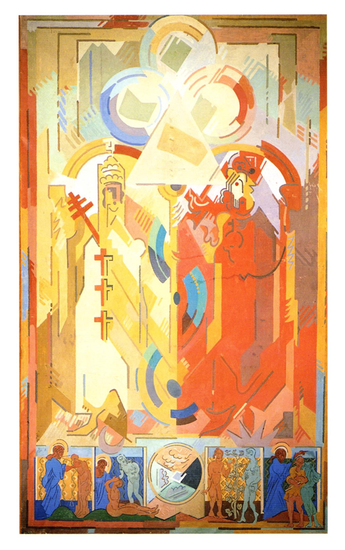
[Fig 1] Albert Gleizes: Autorité spirituelle et pouvoir temporel, oil on canvas, 336 x 203 cm, not signed or dated (1939-40), Lyon, Musée des Beaux-Arts, cat rais no 1644.
It is commonly known by the title The Pope and the Emperor but its real title is Spiritual Authority and Temporal Power - the title of two books written by writers who interested Gleizes, the Hindu theologian Ananda Coomaraswamy and the esoteric philosopher René Guénon.
The painting is divided into three parts which illustrate in an almost programmatic way the three levels of human nature which Gleizes believed had to be reflected in the practise of painting if it was to respond fully to our human need. I cannot do better than take up an account by Gleizes's pupil and friend, Jean Chevalier: [1]
[1] Jean Chevalier: 'L'Oeuvre d'Albert Gleizes' in L'Art de l'Église. Bruges, 1954. Quoted in L'Art Sacré d'Albert Gleizes, exhibition catalogue, Caen, 1985. Pages not numbered, comment on exhibit no. 24.
'The three natures of reality: at the bottom, space (the figurative element as it is experienced by the senses) with Genesis.'
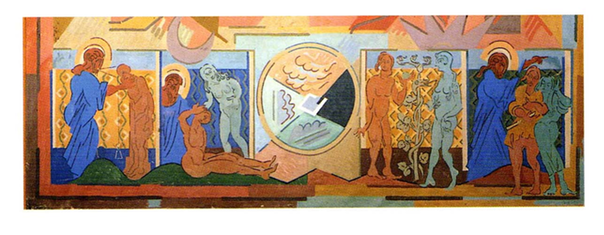
That is, the creation of Adam, the creation of Eve, the eating of the fruit of the Tree of Knowledge, the expulsion from Eden, all represented in what is for Gleizes a relatively figurative manner. Then:
'Middle register: the Pope and the Emperor and their will (the ascending spiral). This is the level of witness - time, cadences, characteristics that were derived from the experience of Cubism.'
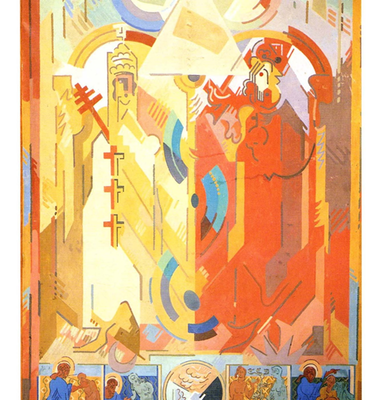
The figurative element, which is still present, is broken up into an interplay of straight lines and curves which put the eye into movement, ultimately a spiralling movement. Then:
'at the highest level, the Trinity - the three colours of light.'
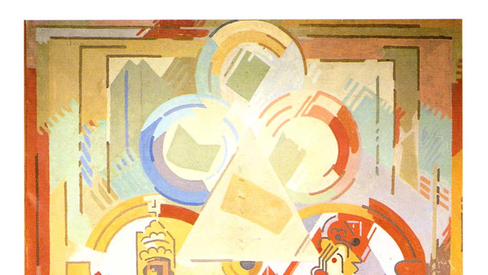
The 'three colours of light' being the primary colours (in pigment form, not in the spectrum itself) - red, yellow and blue which, combined, make up grey which has the property that it will take on the complementary of any colour placed next to it, thus recreating the full colour circle, the fulness of light. An interesting analogy for the Trinity but not one, so far as I know, that is found in the traditional literature.
In the context of this particular talk I do not want to go into great detail on the technicalities of a painting like this but I do want to stress these three, indispensable and inseparable, orders of reality:
(1) Space, which, considered in purely painterly terms, is a matter of proportion and measurement and of a 'figure', or 'image', representational or otherwise, which can be seized by the eye all at once -
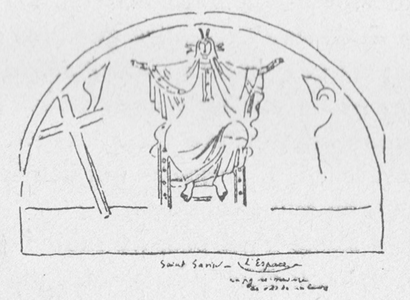
(2) Time, which is present in the painting through the way in which the eye is put into movement from one thing to the other:
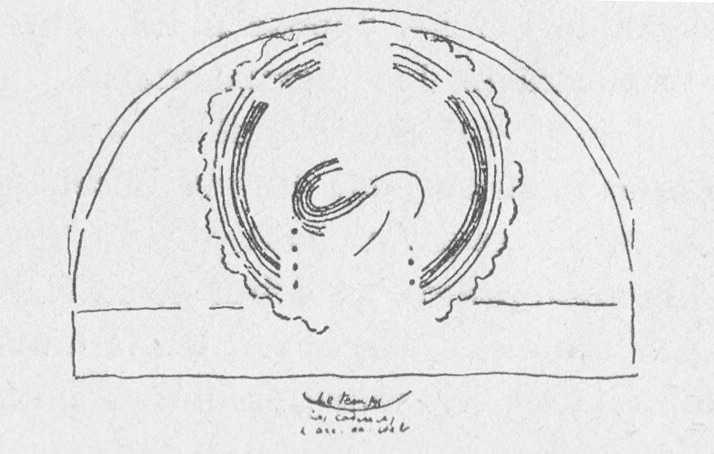
(3) Eternity, which is present through the overall form of the painting which is at once single and circular and consequently experienced as both moving and unmoving.
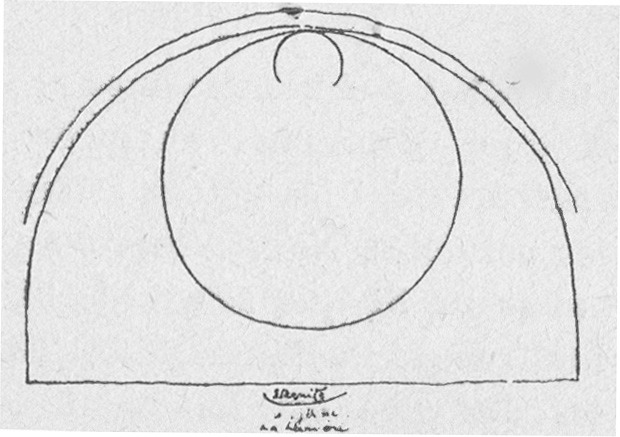
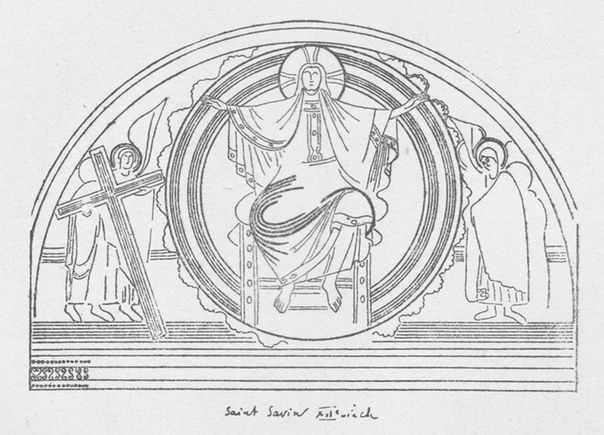
[Fig 2] Illustration from Gleizes: Homocentrisme (1937) based on a Christ in Glory from the Abbey Church of St Savin sur Gartempe, Poitou, France.
And I would like to point to the parallel there is - and Gleizes was very conscience of it - to the threefold anthropology that we commonly find in patristic literature: not the duality of body and soul but the triad of body, soul and spirit - aisthesis (corresponding to the senses), psyche (the emotions and mental processes) and nous - the 'spirit', 'intellect', or 'noetic faculty' being the means by which we can enter into theosis, union with God.